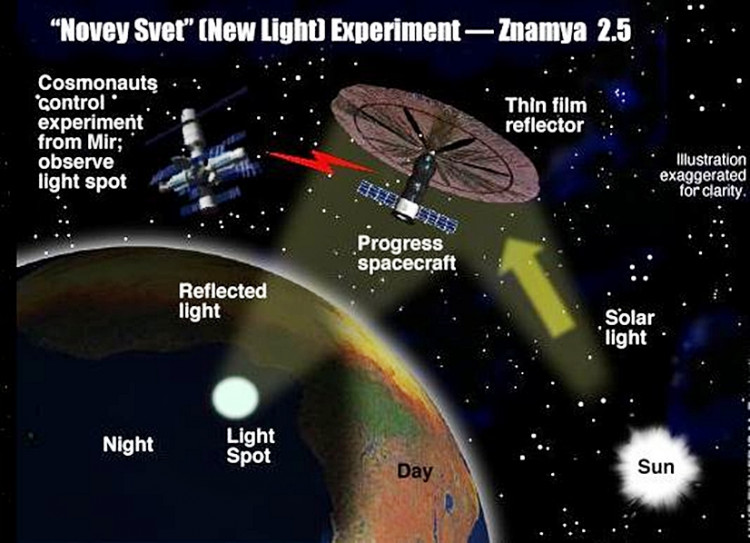The Chinese city of Chengdu, a magnet for foreign investment and the hub for business in Western China, plans to orbit an "artificial moon" in a bid to cut down on part of its soaring nocturnal electricity bill.
This "fake moon," which is really a sophisticated "solar mirror," will be placed in a geosynchronous orbit so that it will hover only over Chengdu. A geosynchronous orbit is located some 36,000 km above mean sea level.
The city government revealed that research on developing this fake Moon has been going on for years. It expects to launch the illumination satellite by 2020 at the earliest.
Chengdu's fake moon, which doesn't yet have a name, will be eight times brighter than the Earth's real Moon. In theory, luminosity this bright should allow the fake moon to reflect light from the Sun onto a very small part of the city at night.
The area encompassed by the sunlight reflected from the solar mirror covers only 130 square kilometers, however. The entire city of Chengdu spans an area of 14,400 square kilometers.
The satellite will be encased in a special reflective coating, said Wu Chunfeng, chairman of Chengdu's Aerospace Science and Technology Microelectronics System Research Institute. Wu also said the artificial moon has been undergoing testing for several years. He didn't reveal how much the project costs.
A ground station will control the diameter of the reflected light to ensure it focuses precisely on the city and nowhere else. The light reflected off the fake moon won't be very bright, however.
Scientists have described the beam's luminosity as "a dusk-like glow." While light this dim might not rouse sleeping animals, insects or plants, it seems to contradict the reason for launching the satellite in the first place. Then there's the problem that clouds hovering over the city will block the illumination satellite's light from reaching the ground.
Chengdu city officials also believe tourists will be more likely to visit and see the fake moon at night.
The scientists and engineers working on Chengdu's fake moon will likely take to heart the lessons from the only fake moon launched into space.
In 1999, Russia orbited a solar mirror named Znamya 2.5 to light-up cities in the inhospitable and far-flung cities of arctic Siberia.
Znamya 2.5 was deployed into Low Earth Orbit on Feb. 5, 1999. It had a diameter of 25 meters and was expected to produce a bright spot 7 kilometers in diameter. The luminosity of this beam was the equivalent of five to 10 full moons.
Soon after deployment, however, the mirror snagged the antenna of the Progress cargo spacecraft and was badly torn. After several failed attempts by Russian mission control to free the mirror from the antenna, Znamya 2.5 was de-orbited. It was destroyed on atmospheric re-entry.






